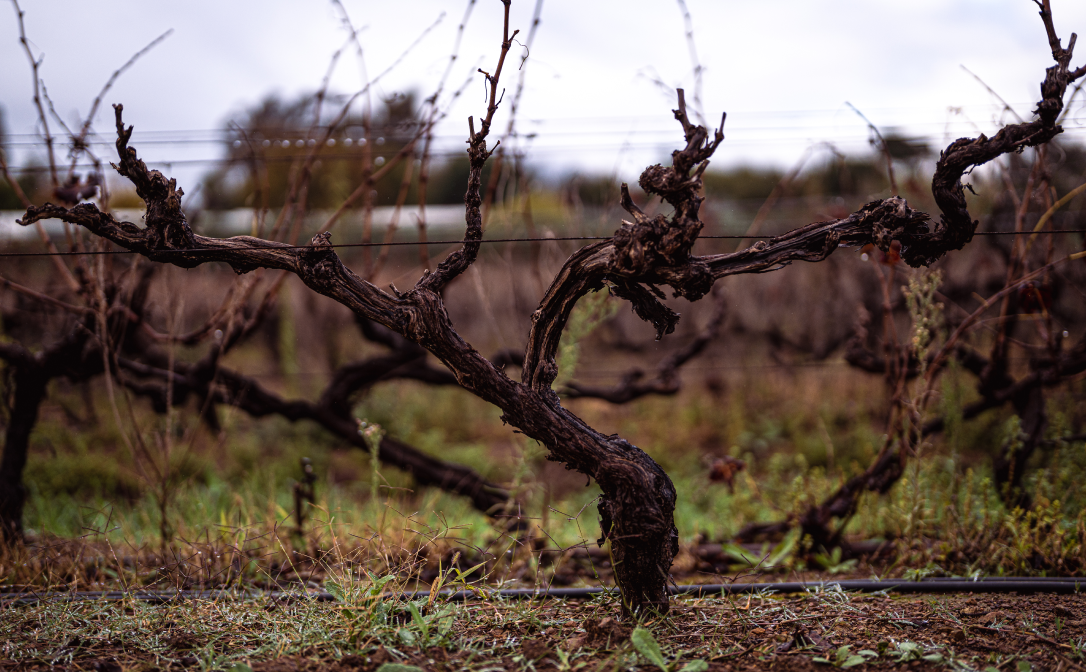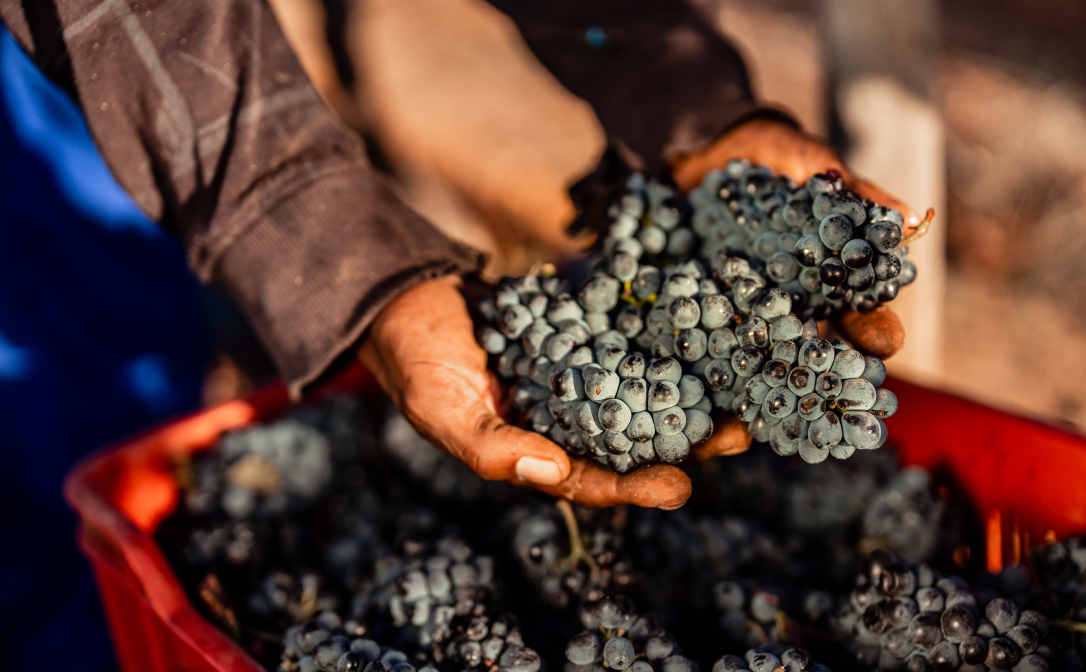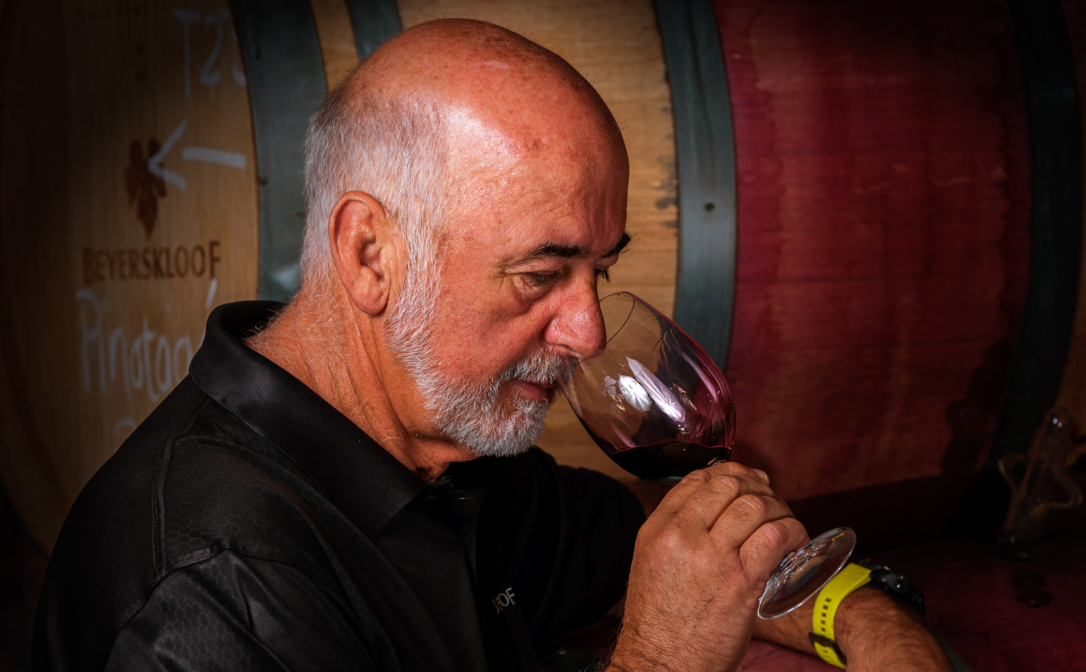On the cusp of its 100-year anniversary, what is the current state of this polarising grape?
On 17 November 1924, Professor Abraham Izak Perold jotted in his diary the happenings of the day, one of which was some gardening. A seemingly inconsequential, green-fingered moment, that would set 100 -years of viticulture in motion, and launch South Africa’s indigenous variety, Pinotage to the world.
On a sunny day in his garden at Welgevallen Experimental Farm, Stellenbosch University’s first professor of viticulture employed the technique of ‘open-air hybridisation’ aka simply smudging a male Hermitage (otherwise known as Cinsault) flower with pollen from Pinot Noir. The experiment created four seeds, which he planted in the same garden, a year later in 1925.
There, amidst the overgrown foliage, four young Pinotage plants grew. Perold was said to have forgotten all about his experiment when he left the university in 1927 for a position at what was then South Africa’s premier wine company, KWV.
We have Charlie Niehaus to thank for remembering the existence of the nascent plants - a lecturer who had an inkling of what the professor was up to. Digging them up carefully, he transported them to CJ Theron’s nursery at Elsenburg Agricultural Training Institute. There it was labelled ‘Perold’s Hermitage x Pinot Noir’. With the full, enthusiastic support of Perold, Niehaus then grafted plant material onto rootstocks at Welgevallen. And it was in that very vineyard that the name ‘Pinotage’ was decided upon by the two protagonists – a contraction of the grapes that sired it. The best four plants of these were selected from which Pinotage's inaugural mother block was planted at Myrtle Grove in 1943, a farm on Sir Lowry’s Pass near Stellenbosch and Somerset West.

A close-up of a Pinotage vine (Credit: Beyerskloof)
However, from this promising start it took a bit longer for it to finally land in the bottle (as a single varietal in any case). The first time ‘Pinotage’ was officially emblazoned on a label was the 1959 Lanzerac, released in 1961, from a vineyard planted in 1953 on Bellevue estate, a block which is still in use today.
The contemporary renaissance of Pinotage
“Pinotage is capable of many diverse expressions,” says its longtime champion, winemaker Beyers Truter. “It also has a remarkable ability to age.” In fact, it’s this ageability that has seen it gain traction on the secondary market, more so than any other South African red wine, fast becoming a collector’s favourite.
At just 25, Truter became Kanonkop’s third winemaker, a tenure that stretched from 1981 to 2003, during which he also started his own estate, Pinotage-focused Beyerskloof in the Bottelary area of Stellenbosch. The first vines for Beyerskloof were planted in 1988.
In his time at Kanonkop, Beyers Truter radically changed the way Pinotage was treated in both the vineyard and the cellar. His moment of discovery came after tasting a 1972 Simonsig Pinotage, which was then aged ten years in bottle. Inspired, he adopted Frans Malan’s method of ageing Pinotage in new oak for 12 months. His first vintage won him the Robert Mondavi Trophy for International Winemaker of the Year in 1991 for the 1989 Kanonkop Pinotage.
This award was the instant boost Pinotage needed. You see, the patriotic grape had suffered a damning reputational blow - one the category is still battling to shrug off. In the 1970s a group of British MWs visited South Africa and the verdict on the scrappy new cultivar was not positive. The main criticisms were tasting notes of ‘spray paint’, ‘burnt rubber’ and ‘rusty nails’. Because of this, plantings quickly dwindled. In 1979 there were only 66 639 vines left standing.
Today it is a much happier picture thanks to continued improvement of viticultural and cellar practices with a focus on quality production. Pinotage is now South Africa’s third most planted red grape and sixth overall. (Cabernet sauvignon is the country’s leading red grape, followed by Shiraz). According to data from SAWIS, the South African regulatory body, there are currently 6,585.21- hectares of Pinotage in the ground. The majority is planted in the Swartland, closely followed by Paarl, then Stellenbosch. The hardy grape is, however, grown right across South Africa’s regions, from the interior to the coast.

Pinotage grapes being harvested (Credit: Beyerskloof)
Pinotage’s viticultural characteristics lend itself to this variety of growing conditions. Moderately vigorous and productive, it yields small, thick-skinned berries (offering some protection from botrytis bunch rot). It is both early to mid-budding as well as ripening, which means it can often be harvested before the major heat waves. It also requires a moderate amount of water and thus can be dryland farmed.
All these factors combine to make it eminently suited to being cultivated as a bush vine. As proof of this, some of the oldest red wine vineyards in the country are bush vine Pinotage, the one at Bellevue a prime example.
Top South African viticulturist Etienne Terblanche supports this view. “It’s interesting that the majority of old vines for red wine are Pinotage and Cinsault, the latter being a parent of the grape.”
Terblanche also points out that commercially it is a relatively young variety; ‘There isn’t a lot of clonal diversity as opposed to the 1000s, say, Pinot Noir has’. Currently there are approximately eight commercially available clones for Pinotage. Many of the top estates are actively developing their own, such as the ‘Kanonkop clone’ and Truter says we have a ‘Diesel clone’ to look forward to from Beyerskloof, named for their flagship Pinotage.
What does Pinotage taste like?
Much like South Africa’s flagbearer, Chenin, Pinotage can be made in a wide variety of styles, from bottle-fermented examples and berry-forward rosés to light and medium-bodied reds, all the way to rich, full-bodied, tannic wines built to age. Beyerskloof even dabbles in a ‘white’ Pinotage (blended with Chenin).

Beyers Truter (Credit: Beyerskloof)
Stylistically though the two main categories can be broadly split into two camps; the more traditional oaky versions, or the lighter bodied juicy reds styled as ‘new wave’. In both, however, the tell-tale characteristics are brambleberries, often a mix of red and black berries, medium to high acidity (depending on where it’s planted) and soft, round grape-derived tannins.
Proponents of the new wave cite distinctly floral aromatics. Bernhard Bredell of Scions of Sinai makes two examples, The Féniks is made from a parcel planted in 1976, and The Atlantikas, made from a vineyard which is planted just five kilometres from the ocean. “Pinotage fills the cellar with the scent of roses,” says Bredell. “It always has some of the best aromatics in the winery.”
Another proponent of lighter styled Pinotage, Jolandie Fouche of own-label brand Wolf & Woman, agrees, saying: “Pinotage brings rose petals and violets, plums, red cherries and spices. The palate can be pure and vibrant, energetic, with good acidity.”
New wave Pinotage, she says, can be described as a modern take on the more traditional wines. “Wines that express site, made with low intervention methods that are elegant with fruit purity and lower alcohol.” She says ageing takes place in neutral vessels such as concrete, old oak barrels and amphora versus the new oak favoured by the blockbusters.
“I like taking Pinotage back to the red-fruited and lighter-bodied DNA of its parents, Cinsault and Pinot Noir. It is the most challenging grape to work with,” she admits. “It keeps you on your toes.”
When Fouche made her first Pinotage in 2018 she says it turned out that Pinotage loves granite for the fresher, more floral styles. “Old vines are also a key, as Pinotage, like Cinsault, has the ability to crop high yields. Old vines are more in balance and are naturally lower yielding.”
She shares that a ‘fun fact’ about Pinotage is that it has the highest natural nitrogen of all cultivars. This means once it starts fermenting it goes quickly. In order to mitigate this, Fouche employs cold soaking prior to fermentation in order to stabilise colour. “I work gently. We call it the teabag effect, where it soaks rather than extracts.”
“An unexpected success is more rewarding than an expected one,” muses Fouche. “That’s why I love the cultivar.”
Fouche is certainly not alone. With an alluring spectrum of styles, passionate producers committed to quality production, climate adaptability, and a growing investment market, the next 100 years for Pinotage look very bright indeed.
Want to learn more about interesting grape varieties from around the world? Our Level 3 Award in Wines covers key factors in the production of wine: location, grape growing, winemaking, maturation and bottling.
This blog post was written by Malu Lambert DipWSET. Multi-award-winning wine writer and critic Malu writes for a variety of international publications, including JancisRobinson.com and Decanter. She won the title of the Mont Blanc Emerging Wine Writer of the Year at the Louis Roederer International Wine Writers’ Awards 2019 as well as the Veritas Young Wine Writer in 2015. Most recently she was a finalist in the The Gusbourne Estate Award for Long-Form Writing category of the inaugural 67 Pall Mall Global Wine Communicator Awards. She has also judged for Decanter, IWSC and Concours Mondial du Sauvignon.


